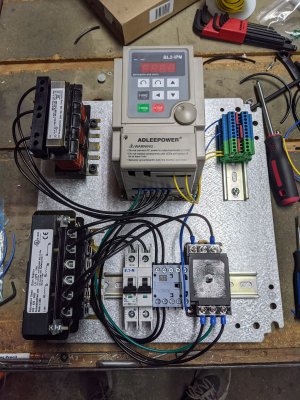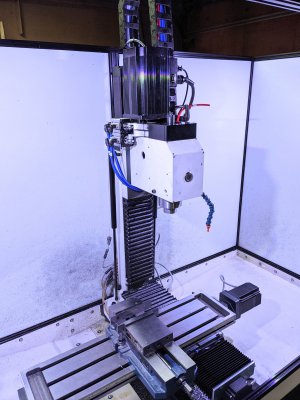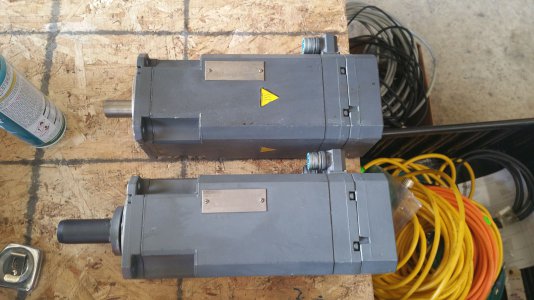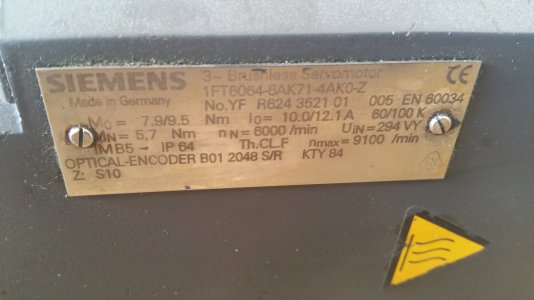All the "real" mills ive seen/used have an induction motor just like Jim has suggested. Not the 15kRPM+ spindles, but everything under that. Modern VFDs are really blurring the line between servos and traditional dymb spindle drives.
The problem i have with induction motor/vfd setups is simply space and weight. Unless you can beg/borrow/steal a really high performance spindle-specific induction motor you're stuck with fairly standard motors. And standard induction motors, up to about 10hp or so, arent as power-dense as PM servos or BLDCs.
Thats the reason Ive selected a PM motor for a spindle. Weight and size advantage means my Z axis isnt trying to lift 100lbs of motor and I can fit a standard PDB indtead of some kludge lever thing.
If i had more room, or if the motor was a smaller percentage of spindle/head assembly weight I'd probably use an inductio motor, vfd, and spindle-mounted encoder like Jim described
The problem i have with induction motor/vfd setups is simply space and weight. Unless you can beg/borrow/steal a really high performance spindle-specific induction motor you're stuck with fairly standard motors. And standard induction motors, up to about 10hp or so, arent as power-dense as PM servos or BLDCs.
Thats the reason Ive selected a PM motor for a spindle. Weight and size advantage means my Z axis isnt trying to lift 100lbs of motor and I can fit a standard PDB indtead of some kludge lever thing.
If i had more room, or if the motor was a smaller percentage of spindle/head assembly weight I'd probably use an inductio motor, vfd, and spindle-mounted encoder like Jim described





